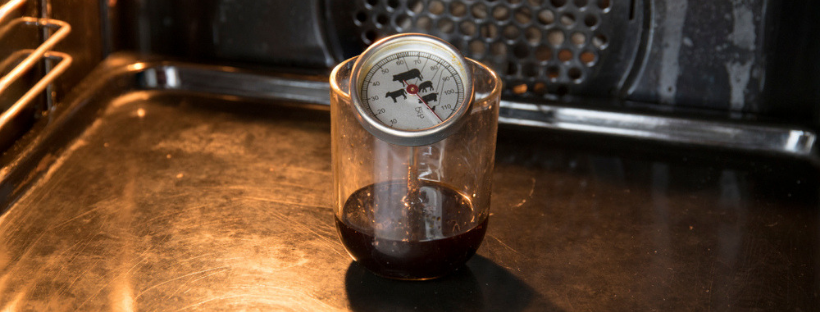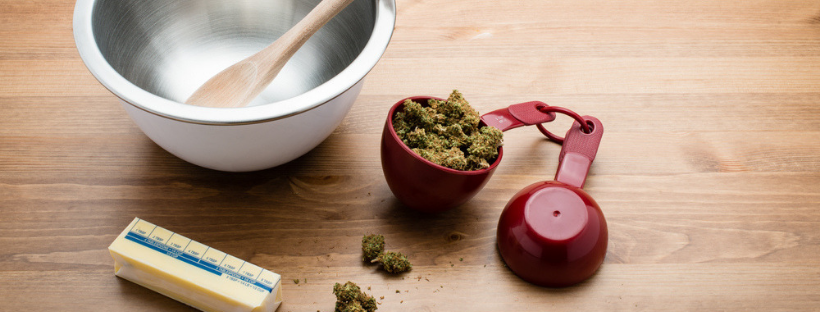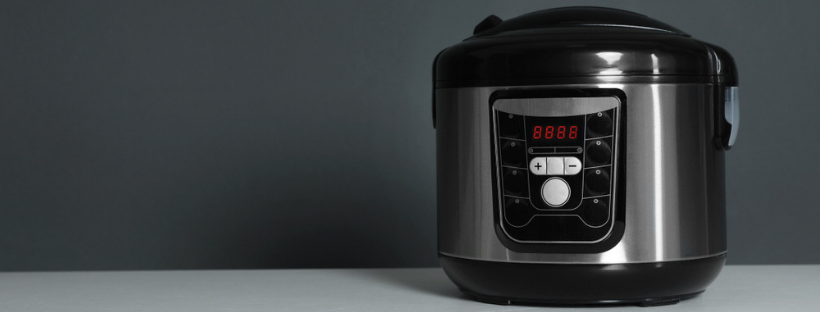Cannabutter, short for cannabis-infused butter, is one of the easiest and most common ways to make weed edibles.
However, novice cannachefs can find making cannabutter a little bit tricky.
“How much weed should I throw into my cannabutter mixture?”
“Can I use raw cannabis to make cannabutter?”
“What on earth is decarboxylation?”
Fear not, we have the answers to all these questions.
This article will show you how to make cannabutter at home and why you should be particularly cautious when making DIY weed edibles.
We’ve left no stone unturned.
Let’s cook!
Why You Need Cannabutter in the First Place
Have you ever wondered whether or not it’s possible to get high after eating a sheer cannabis bud?
Don’t blush if you’ve tried it! We all have our quirks.
But let us tell you something — you won’t ever get high off raw cannabis.
In order to produce its psychoactive effects, THC needs to be in its active form, and raw buds don’t give you this kind of luxury.
Now you know why people smoke or vaporize cannabis; it activates the THC so it can actually get you high.
Another reason for making cannabutter is that THC is fat-soluble, meaning it dissolves in fats, just as some vitamins do.
The cannabutter will be the carrier for THC and other cannabinoids so they get absorbed more efficiently into the bloodstream.
Easy?
Good. Now, let’s have a brief science class.

Decarboxylation: How to Activate THC
Before you even take your butter out of the fridge, you’ll need to focus on your second ingredient — your resinous cannabis buds.
Now you know that THC needs to be activated prior to making cannabutter, but what does this activation mean exactly?
In their untreated form, cannabis buds produce a non-intoxicating cannabinoid called THCA (Tetrahydrocannabinolic Acid). When you smoke or vaporize cannabis, the heat removes the extra carboxyl group from THCA, converting the compound into THC, the molecule responsible for marijuana’s euphoric effects.
That’s why it’s called deCARBOXYLation.
But how to activate the THC if you want to prepare some delicious treats for your next party?
All you need is an oven and about 40 minutes of spare time.
Note: Some recipes may call for decarbing cannabis directly in the hot butter, but the longer the soaking time, the worse your infused butter is going to be. This is why we recommend using the oven prior to throwing the buds into the butter.
Equipment:
- Weed Grinder
- Oven
- Parchment paper
Ingredients:
- ½ oz of your favorite cannabis strain.
How to Decarboxylate Weed for Your Cannabutter
Below we show you how to decarb your weed in the oven using 3 simple steps:
- Preheat the oven to 245 F
- Grind your cannabis buds to smaller pieces, but don’t try to make it as fine as powder. While you might be tempted to do so in order to achieve a more even heating surface, it can burn your weed, causing it to lose THC along with other cannabinoids.
- Place the ground buds on a sheet of parchment paper using an oven-safe baking tray. Set the timer for 30-40 minutes, mixing the buds gently every 10 minutes to make sure you expose the entire surface area of the buds.
So, now that the prep stage is over, it’s time to make the cannabutter.
Are you ready?

A Step-by-Step Guide to Making Cannabutter
Here’s what you need to make cannabutter at home:
Equipment:
- A Small Saucepan
- A Stovetop
- Cheesecloth or a coffee filter
- A glass dish with a tight-fitting lid
Ingredients:
- 1 cup unsalted (or salted) butter
- ½ oz. cannabis buds, ground and decarboxylated
Procedure:
- Grind the decarboxylated cannabis to a finer consistency than you did for decarbing.
- Add 1 cup of water along with 1 cup of butter into the saucepan. Simmer over low heat until the butter melts. The water will help to regulate the temperature, preventing the butter from burning.
- Once melted, infuse the butter with your ground cannabis. Mix well to combine.
- Continue simmering the mixture over low heat. The ideal temperature for this step is slightly above 160 F, but you should never cross 200 F — if you have a cooking thermometer for this job, it’s all the better. Let the mixture simmer for up to 3 hours, stirring from time to time. Keep in mind not to allow the mixture to come to a rolling boil.
- Now it’s time to strain the cannabutter. Grab your cheesecloth (or coffee filter), and line it over your prepared container, setting a funnel on top of the jar beforehand. After cooling off the butter, pour it over the cheesecloth and allow it to deep freely. Don’t squeeze the cheesecloth, as you’re more likely to push more plant material through — this will impact the taste of your butter very badly.
- Refrigerate the jar of your butter. You might see some excess water forming at the bottom of the jar; you can remove the solid butter from the container and drain the water out. Make sure to let the butter stay in the refrigerator for, at least, an hour before removing the water.

Try This Hassle-Free Cannabutter Recipe Using a Slow Cooker
If you have a slow cooker at home, chances are you’ve been only using it for making stews, pulled meat, dips, and — occasionally — desserts.
But did you know you can use your slow cooker to make cannabutter?
The process takes as much time as the stovetop method, but it doesn’t require so much attention on your part.
Directions For Making Cannabutter Using a Slow Cooker
- Grind your weed with a grinder. You can use a coffee grinder to pulverize the flower to a fine consistency and prevent it from entering your cannabutter again upon straining.
- Set your slow cooker to low. The high option will be too much for THC and cannabinoids, as it exceeds 200 F.
- Add the butter and weed, and set the timer for 3 hours.
- Turn off the slow cooker and let the butter cool.
- Strain to the jar and place the cannabutter in the refrigerator so it solidifies.
Final Thoughts on How to Make Cannabutter
We hope this guide has helped you get a better understanding of how to make cannabutter at home and why you need to decarb your weed before the process.
Remember that it’s difficult to gauge the potency of your cannabutter, so if you want to dose it responsibly in your edibles, try spreading ½ teaspoon on a snack and see how this quantity affects you. Decrease or increase the dose as desired.
Do you make cannabutter at home?

